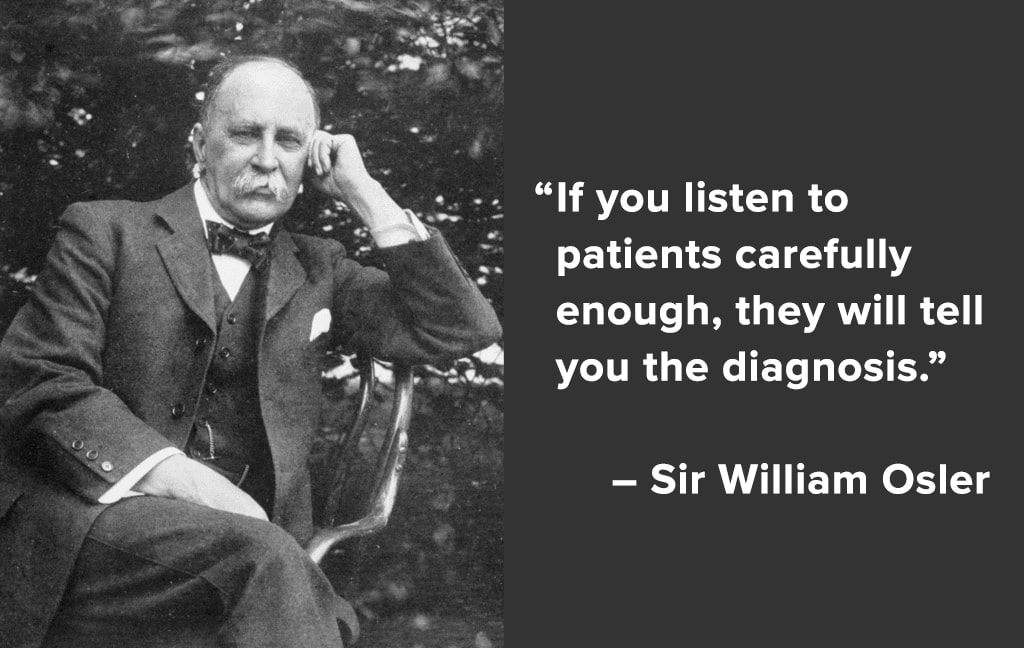Listening as a Diagnostic Tool in Medicine

Sir William Osler is the physician identified with creating much of our modern medical education system of internship and residency. He would often tell his students something like what I have written above. The goal was to get them to understand that even back at the turn of the 20th century, listening to the patient was already becoming a lost art.
The actual quote is “Listen to the patient. He is telling you the diagnosis.” (1). What Osler meant was that patients have thought long and hard about what’s wrong with them. We physicians often insert our own biases into the diagnostic conversation. However, if we just listen more and speak less, analyzing what the patient tells us usually leads to a better diagnosis than the opposite which is to speak more and listen less.
Now in the age of MRI and even newer variants of MRIs, many physicians are focused on reading some report that comes with a test as the way to get to a diagnosis. However, the ears and brain are still the best diagnostic tool that physicians have at their disposal. They still beat the snot out of the latest and greatest radiology study.
The upshot? This is why I book an hour with every new patient. There needs to be lots of time for listening and a proper hands-on physical exam. However, the listening part is where the real magic of an accurate diagnosis often happens.
_____________________________________________
References:
(1) Pitkin RM. Listen to the patient. BMJ. 1998;316(7139):1252. doi:10.1136/bmj.316.7139.1252

NOTE: This blog post provides general information to help the reader better understand regenerative medicine, musculoskeletal health, and related subjects. All content provided in this blog, website, or any linked materials, including text, graphics, images, patient profiles, outcomes, and information, are not intended and should not be considered or used as a substitute for medical advice, diagnosis, or treatment. Please always consult with a professional and certified healthcare provider to discuss if a treatment is right for you.
